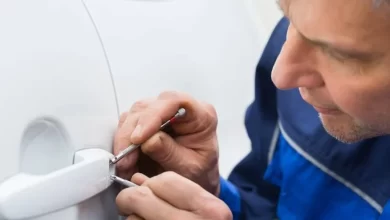Revolutionary Locking Systems for Detention Facilities: Safety First

When we talk about detention center locks, the conversation inevitably steers toward safety and control. Picture a chess game where every move matters. The same could be said of true containment measures, which call for more than just sturdy locks – the stakes are higher. It’s a dance between security and accessibility, where even one misstep could lead to chaos.
Locks are the unsung heroes in detention centers. They work tirelessly around the clock, ensuring the wrong people stay in their designated spots. But being mechanical marvels isn’t enough. They must stand the test of wear and tear, potential tampering, and yes, even the occasional cunning inmate with far too much time on their hands. So, what’s in these contraptions that make them so special?
Take, for instance, the latest in biometric technology. No more clunky keys or forgettable passwords. Fingerprints and retinal scans are becoming the norm because, let’s face it, you can’t exactly forget your eyeball in your other pants. It’s as if we’ve leaped straight into a sci-fi movie, but with very real security benefits. Imagine an inmate trying to fake a retinal scan – not happening. This tech secures entries and eliminates the risk of a guard’s key falling into the wrong hands.
Now, consider digital control systems. These systems allow central management to monitor and control every door in the facility through a single interface. Picture a guard watching a high-tech control center, panels lit up like a Christmas tree, ready to lockdown if even a mouse sneezes in the wrong place. These are the unseen safety nets. You could say it’s a bit like having the ultimate universal remote that zaps trouble at the push of a button.
The marriage of RFID technology and traditional locking systems is another breakthrough. This isn’t your grandma’s library book tracker. Here, it means each inmate wears a bracelet that communicates with the doors. If they try to push their luck or wander where they shouldn’t, alarms sound, doors don’t open, and their little escapade ends before it even starts.
Control flow systems also play a crucial role. Simply put, these systems control how many people can pass through a door at once, like a bouncer with a clicker counter at a club. This ensures not only that only designated personnel are in restricted areas, but also helps in preventing mass escape attempts. yes, they’re perfect for avoiding that movie-style jailbreak where everyone bolts toward freedom.
We must also consider remote locking systems. Guards can lock and unlock doors from a distance, reducing the risk that comes with physically being near potentially dangerous inmates. Think of it as a drone pilot’s role in a control room versus being in direct combat – safer and more efficient.
While these advancements are impressive, let’s not forget the importance of regular maintenance. A squeaky gate might mean more than an annoying sound; it might hint at wear that could lead to a security breach. Just like how we would never ignore the check-engine light on our cars for too long, the same attention is crucial for these critical systems.
And then there’s the human element. You could have all the top-notch gadgets in the world, but if the staff isn’t well-trained, it’s like having a Ferrari and letting a novice drive it. Regular drills, updates on the latest tech, and quick reflexes are the bread and butter of operating these systems effectively. The smartest lock in the world won’t do much good if the person using it is clueless.
Take this story I heard from a detention center guard. Let’s call him Mike. One evening, one of the seasoned inmates was trying his luck with a smuggled tool. Mike caught a subtle change in the security feed—just a slight, but noticeable motion near the cell door. Within seconds, the alarm was triggered from the control room. Mike said, “Thanks to that remote access, we locked that guy in tighter than a drum. Without it, could’ve been a different story.”
And who thought the old key systems are useless? They’re not. Some centers still use them as a fallback. They might seem outdated, but like a grandpa’s old pocket knife, they’re reliable in a pinch.
What’s also paramount is continuous improvement. Yup, tech today is something to marvel at, but what’s next? AI is making waves—the kind that learns inmate behaviors, predicting an escape attempt before it even happens. Yes, folks, pre-crime isn’t just a Hollywood gimmick. Just imagine, a system that can anticipate trouble and react, giving guards that crucial edge to stay one step ahead.
So yeah, these high-tech locks and systems are the unsung guardians. They blend cutting-edge tech with tried-and-true methods, ensuring every pawn is in place and every piece of the chessboard is secure, one lock at a time. It’s all about maintaining that delicate balance between safety and control. And trust me, that’s a game-changer.






